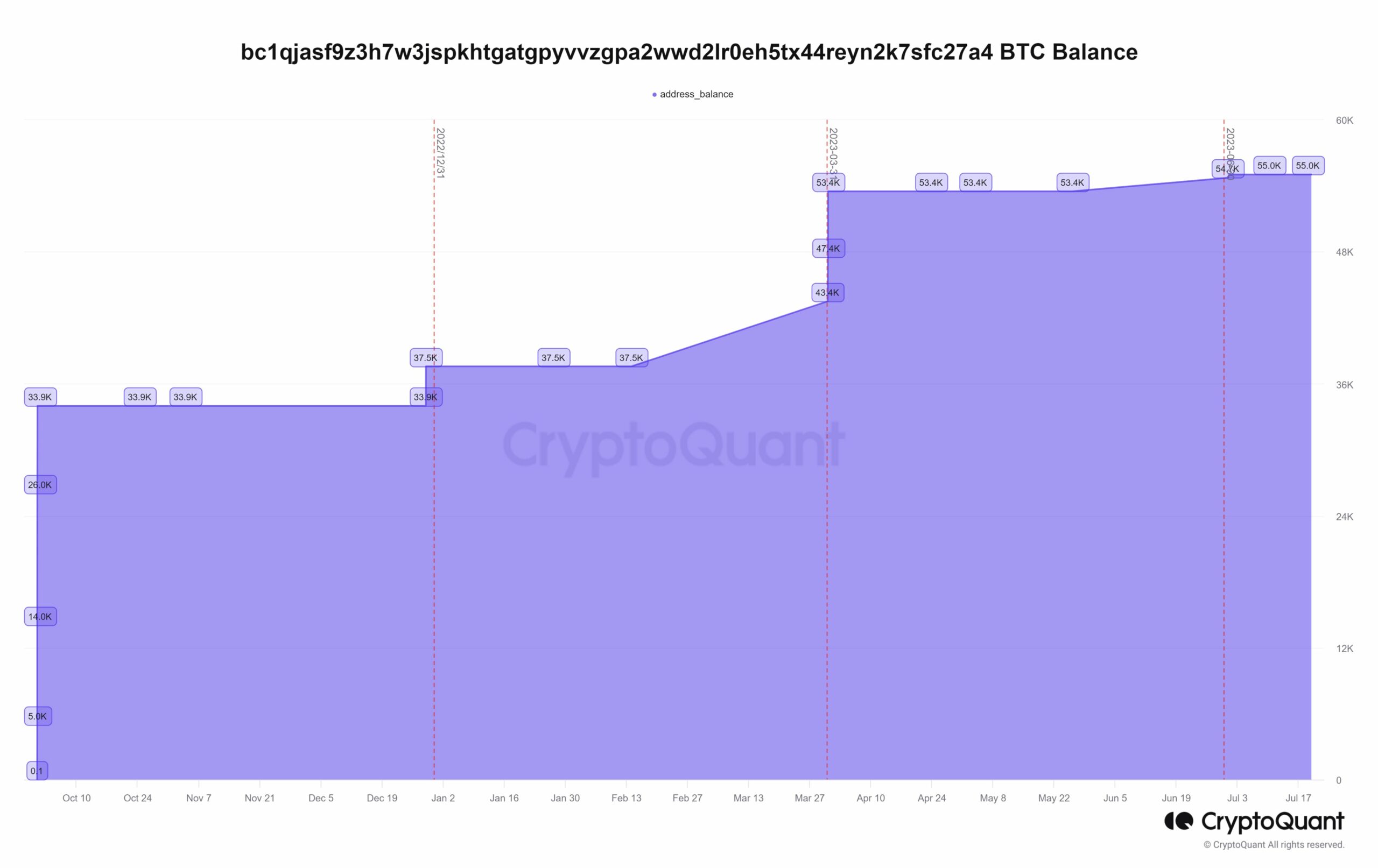FUD Dismissed: Tether’s Bitcoin Assets Proven with Data
BTC
BTC/USDT
$15,938,665,312.25
$93,388.00 / $90,863.47
Change: $2,524.53 (2.78%)
+0.0044%
Longs pay
Contents
- CryptoQuant, an important on-chain data and analytics provider, has taken action to dispel doubts surrounding Tether’s position as the eleventh largest holder of Bitcoin.
- An examination of Tether’s Bitcoin holding wallet revealed some alleged inconsistencies compared to the official statement.
- The company stated that significant movements of 1,000 to 10,000 Bitcoins and more occurred between May and July.
On-chain data responded to the FUD (fear, uncertainty, and doubt) surrounding Tether’s Bitcoin assets: Tether continues to hold Bitcoin.
FUD Surrounding Tether Addressed
CryptoQuant, an important on-chain data and analytics provider, took action on Twitter to dispel doubts surrounding Tether’s position as the eleventh largest holder of Bitcoin. The company decided to respond to the spread of fear, uncertainty, and doubt (FUD) this week with the power of its on-chain data.
CryptoQuant emphasized that Tether’s quarterly report includes approximately $1.6 billion worth of Bitcoin, which elevates the stablecoin issuer to the top ranks among the largest holders of the cryptocurrency.
However, an examination of Tether’s Bitcoin holding wallet revealed some alleged inconsistencies compared to the official statement. A notable point was the absence of Bitcoin holdings in Tether’s report for the fourth quarter of last year. This discrepancy contradicts the current accumulation trend in the wallet.
In response to these uncertainties, CryptoQuant suggests that Tether may have additional Bitcoin wallets beyond the examined wallet. The analytics firm emphasized the reliability of on-chain data to confirm news during times of doubt.
Meanwhile, CryptoQuant also highlighted an important blind spot that should be considered when monitoring the behavior of crypto whales using on-chain data. It noted that the term “whale” traditionally refers to entities holding 1,000 or more Bitcoins, but this classification has the potential for limitations.
This cautionary note highlights the potential misconception that individual characteristics may not align with the traditional definition of a “whale.” For example, the misclassification of exchange wallets as whales actually means they could be internal wallets.
Increase in Exchange Withdrawals by Whales
CryptoQuant stated that significant movements of 1,000 to 10,000 Bitcoins and more occurred between May and July. According to the firm, exchange withdrawals experienced a notable increase. However, this increase in activity was primarily associated with wallet transfers within the Robinhood exchange.
As a result, while on-chain data is a powerful tool for examining cryptocurrency market dynamics, careful categorization of assets classified as “whales” is necessary to prevent misinterpretation of results.
Lucien Renard
Comments
Yorumlar
Other Articles
Tether Adds Nearly 9,000 Bitcoin to Reserves in Q4 2025, Reaching 96,185 BTC
January 1, 2026 at 03:25 PM UTC
Bitcoin’s Potential 2026 Rebound Debated Amid Bottoming Signals
January 1, 2026 at 12:16 PM UTC
Bitcoin ETFs Attract Inflows as Liquidity Rises, Signaling Potential 2026 Shift
January 1, 2026 at 11:02 AM UTC

